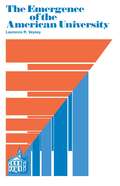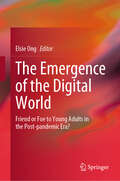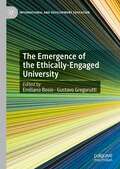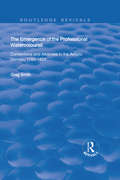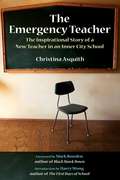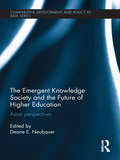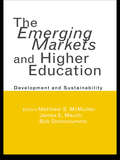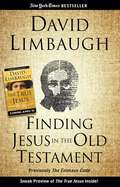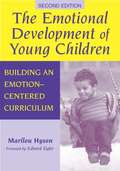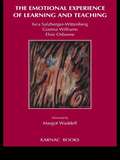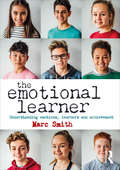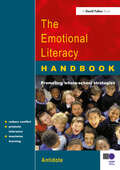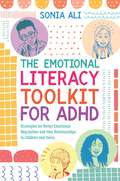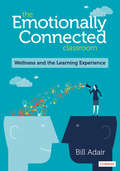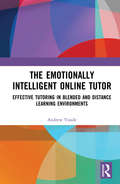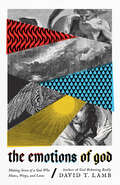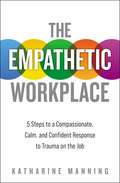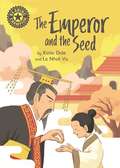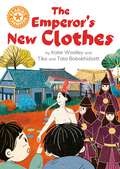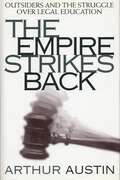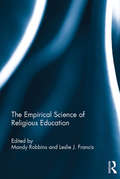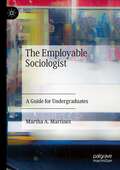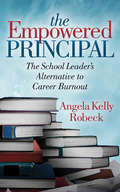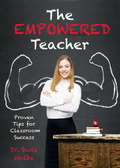- Table View
- List View
The Emergence of the American University
by Laurence R. VeyseyThe American university of today is the product of a sudden, mainly unplanned period of development at the close of the nineteenth and the beginning of the twentieth centuries. At that time the university, and with it a recognizably modern style of academic life, emerged to eclipse the older, religiously oriented college. Precedents, formal and informal, were then set which have affected the soul of professor, student, and academic administrator ever since. What did the men living in this formative period want the American university to become? How did they differ in defining the ideal university? And why did the institution acquire a form that only partially corresponded with these definitions? These are the questions Mr. Veysey seeks to answer.
The Emergence of the Digital World: Friend or Foe to Young Adults in the Post-pandemic Era?
by Elsie OngThis book specifically focuses on young adults who have the highest usage of digital technologies in their daily lives. We have assembled contributions of knowledge from scholars and students in Higher Education as they have the most direct experience of going through COVID and were most impacted by it. Through the collection of these views and studies, we will critically discuss how digital technological advances the unique experiences of young adults going through the pandemic. The content will cover a wide range of learning, policy-making, and mental health outcomes to raise pragmatic value to those appraising, and restructuring programs for individuals engaging in digital technologies. This book will draw conclusions on important clinical impact and scientific value on what might be the new direction for upcoming digital intervention and the trend of newly designed educational program for Higher Education. Readers will gain knowledge on the significant impact upon research and improvements for this young generation.
The Emergence of the Ethically-Engaged University (International and Development Education)
by Gustavo Gregorutti Emiliano BosioThis edited volume examines the role of the modern university as a public good institution ethically engaged in social transformation. Featuring contributions from internationally recognized scholars across both the Global North and South, this collection contexualizes issues in higher education such as community engagement, service learning, citizenship and civic responsibility both locally and globally (e.g., local, regional, national, and global engagement). Each chapter addresses the intangible, multifaceted dimensions of the relationships, community impact, and knowledge generation associated with community collaborations. In this way, the volume contributes towards the possibility of re-imagining the role of the modern university beyond a market-oriented, passive, and de-solidarized practices towards a more ethically engaged paradigm based on principles of mutuality, reciprocity and social responsibility.
The Emergence of the Professional Watercolourist: Contentions and Alliances in the Artistic Domain, 1760–1824 (Routledge Revivals)
by Greg SmithThis title was first published in 2002: Draw ing on extensive primary research, Greg Smith describes the shifting cultural identities of the English watercolour, and the English watercolourist, at the end of the eighteenth and the beginning of the nineteenth century. His convincing narrative of the conflicts and alliances that marked the history of the medium and its practitioners during this period includes careful detail about the broader artistic context within which watercolours were produced, acquired and discussed. Smith calls into question many of the received assumptions about the history of watercolour painting. His account exposes the unsatisfactory nature of the traditional narrative of watercolour painting’s development into a ’high’ art form, which has tended to offer a celebratory focus on the innovations and genius of individual practitioners such as Turner and Girtin, rather than detailing the anxieties and aspirations that characterized the ambivalent status of the watercolourist. The Emergence of the Professional Watercolourist is published with the assistance of the Paul Mellon Foundation.
The Emergency Teacher: The Inspirational Story of a New Teacher in an Inner-City School
by Mark Bowden Christina Asquith Harry K. WongThe Emergency Teacher is Christina Asquith's moving firsthand account of her year spent teaching in one of Philadelphia's worst schools. Told with striking humor and honesty, her story begins when the School District of Philadelphia, faced with 1,500 teacherless classrooms, instituted a policy of hiring "emergency certified" teachers to fill the void. Asquith, a twenty-five-year-old reporter for the Philadelphia Inquirer, joined their untrained ranks. Assigned to a classroom known as "the Badlands," she was told to "sink or swim."More challenging than the classroom are the trials she faces outside it, including the antics of an overwhelmed first-year principal, the politics that prevent a million-dollar grant from reaching her students, and the administration's shocking insistence that teachers maintain the appearance of success in the face of utter defeat, even if it means falsifying test scores. Asquith tells a classic story of succeeding against insurmountable odds.With a foreword by bestselling author Mark Bowden and an introduction by award-winning educator Dr. Harry K. Wong, The Emergency Teacher will inspire every teacher-be they first-timers or experienced professionals-to make a difference.
The Emergent Knowledge Society and the Future of Higher Education: Asian Perspectives (Comparative Development and Policy in Asia)
by Deane E. NeubauerThe nature of higher education is by no means fixed: it has evolved over time; different models of higher education co-exist alongside each other at present; and, worldwide, there are demands for higher education to change to better help support economic growth and to better fit chagning social and economic circumstances. This book examines, from an Asian perspective, the debates about how higher education should change. It considers questions of funding, and of who will attend universities, and the fundamental question of what universities are for, especially as the three key funcations of universities - knowledge creation through research, knowledge dissemination through teaching and service, and knowledge conservation through libraries, the disciplinary structuring of knowledge and in other ways - are increasingly being carried out much more widely outside universities in the new "knowledge society". Throughout, the book discusses the extent to which the countries of East Asia are developing new models of higher education, thereby better preparing themselves for the "new "knowledge society", rather than simply following old Western models.
The Emerging Markets and Higher Education: Development and Sustainability (RoutledgeFalmer Studies in Higher Education #25)
by Matthew S. McMullen James E. Mauch Bob DonnorummoUsing an interdisciplinary approach, this book analyzes the relationship between higher education, the economy and government in the development of a democratic and market economy society in emerging market countries. (Poland, Czech Republic, Hungary, China, Hong Kong, Korea, Mexico, Chile and Brazil).
The Emmaus Code: How Jesus Reveals Himself Through The Scriptures
by David LimbaughA New York Times Bestseller! In the 2014 New York Times bestseller Jesus on Trial, David Limbaugh made a case for the Gospels as hard evidence of the existence of God, drawing on his own spiritual journey from skeptic to believer. Now, in The Emmaus Code, Limbaugh unlocks the mysteries of the Old Testament and reveals hints of Jesus Christ's arrival through all thirty-nine Old Testament books. The key to the secrets of the Old Testament, Limbaugh argues, is the crucial New Testament encounter between the risen Jesus and two travelers on the road to Emmaus. With that key, and with Limbaugh as a deft guide, readers of The Emmaus Code will come to a startling new understanding of the Old Testament as a clear and powerful heralding of Jesus Christ's arrival. Limbaugh takes readers on a revealing journey from Genesis through Malachi, demonstrating that a consistent message courses through every one of the Old Testament's thirty-nine books: the power, wonder, and everlasting love of Jesus Christ.
The Emotional Development Of Young Children: Building An Emotion-centered Curriculum
by Marilou HysonMarylou Hyson provides educators with real-life examples and evidence-based teaching strategies to advance children's understanding and appropriate expression of their emotions.
The Emotional Experience of Learning and Teaching
by Isca Salzberger-Wittenberg Elsie Osborne Gianna HenryFirst published in 1983. Routledge is an imprint of Taylor & Francis, an informa company.
The Emotional Learner: Understanding Emotions, Learners and Achievement
by Marc SmithThe Emotional Learner combines practical advice with the latest evidence to offer essential guidance on how to understand positive and negative emotions. Taking its reader on a tour of the most significant research from psychology, neuroscience and educational studies, it reveals that in order to ensure educational success, teachers must have a deeper understanding of how and why emotional states manifest themselves in the classroom. Written by experienced teacher and psychologist Marc Smith, the book examines the complex relationship between cognition and emotion, clearly and thoughtfully exploring: What we mean by ‘emotions’ and why they are important to learning Understanding master and performance learning orientations Cognition, emotion, memory and recall Personality and motivation Dealing with boredom in the classroom Activating and deactivating emotional states Navigating the teenage years Understanding the positive and negative impact of anxiety and stress Fear of failure, how it evolves and how to combat it. The Emotional Learner is a compelling, accessible introduction to understanding that how we feel is intricately linked to how we learn. It will help all those involved in teaching children and young adults to challenge common-sense assumptions about the role of positive and negative emotions, showing its reader how to teach ‘with emotions in mind’ and ensure positive academic outcomes.
The Emotional Literacy Handbook: A Guide for Schools
by James Park Alice Haddon Harriet GoodmanDemonstrating how schools can reduce conflict and bullying, this title promotes tolerance and stimulates a positive attitude to teaching and learning by creating an emotionally literate environment.
The Emotional Literacy Toolkit for ADHD: Strategies for Better Emotional Regulation and Peer Relationships in Children and Teens
by Sonia AliChallenges with emotional regulation and rejection sensitivity can disproportionately affect children and teens with ADHD, impacting on their development at school and their relationship with their peers.Developed for children and young people who experience difficulties with emotional regulation, SEND specialist Sonia Ali, shares a mentoring Intervention programme to support a child or young person with this issue at school or at home. Covering concepts like the fight, flight or freeze response and the 'Window of Tolerance', managing anger outbursts and overwhelm or navigating conflict with peers, this easily digestible book will help educators and carers support children and teens to develop core emotional literacy skills in an enjoyable way!This accessible, step-by-step guide is packed with activities, including role-play situations, discussion-based statements, quizzes and more. The programme can be followed sequentially or 'dipped into' to support a child with a particular issue when relevant.
The Emotionally Connected Classroom: Wellness and the Learning Experience
by Mr. BIll AdairEngineering healthy developmental attachments and repairing dysregulation Suicide rates, ADHD diagnoses, gaming addiction, and adolescent depression are increasing exponentially. It’s difficult to ignore the number of children burdened by stress, anxiety, and unhealthy beliefs. However, the brain remains malleable and new experiences can rewrite the story! The Emotionally Connected Classroom will help educators create environments that promote healthy attachments and repair dysregulations that impair learning capacity. Readers will find. Explanations of neuroscience and human behavior. Strategies and tools to help teachers shift from content-focussed learning and assessment to learning that prioritises wellness. Lesson templates to help “train the brain.” Strategies to address dysfunctional behavior. Engaging case studies.
The Emotionally Connected Classroom: Wellness and the Learning Experience
by Mr. BIll AdairEngineering healthy developmental attachments and repairing dysregulation Suicide rates, ADHD diagnoses, gaming addiction, and adolescent depression are increasing exponentially. It’s difficult to ignore the number of children burdened by stress, anxiety, and unhealthy beliefs. However, the brain remains malleable and new experiences can rewrite the story! The Emotionally Connected Classroom will help educators create environments that promote healthy attachments and repair dysregulations that impair learning capacity. Readers will find. Explanations of neuroscience and human behavior. Strategies and tools to help teachers shift from content-focussed learning and assessment to learning that prioritises wellness. Lesson templates to help “train the brain.” Strategies to address dysfunctional behavior. Engaging case studies.
The Emotionally Intelligent Online Tutor: Effective Tutoring in Blended and Distance Learning Environments
by Andrew YoudeThe Emotionally Intelligent Online Tutor foregrounds the tutor within online and blended learning environments, and focusses on desirable skills, qualities and attributes for effective tutoring. It analyses these qualities in relation to prominent psychological constructs, such as emotional intelligence, and the exploration of their value in practice. This book is focussed on the tutoring of adult learners undertaking study within higher education, commonly on a part-time basis whilst studying vocationally relevant degree programmes. However, the contents are applicable and generalisable to those tutoring within informal environments, such as Massive Open Online Courses. Prominent social constructivist models of e-learning are critiqued with alternative actions provided for tutors now practicing in a digital age. The book provides a conceptual model that represents an interpretation of effective practice in a blended learning context. This book will be of great interest for academics, scholars and postgraduate students in the field of education and for e-tutors delivering online and blended courses. Furthermore, it will be useful for those undertaking teacher training, psychology and counselling courses.
The Emotions of God: Making Sense of a God Who Hates, Weeps, and Loves
by David T. LambThe God of the Bible is emotional.The Emotions of God
The Empathetic Workplace: 5 Steps to a Compassionate, Calm, and Confident Response to Trauma On the Job
by Katharine ManningThis critical resource gives managers, HR, and anyone who may come into contact with someone in trauma—including workplace violence, harassment, assault, illness, addiction, fraud, bankruptcy, and more—the tools they need to be prepared for what lies ahead.This book is crucial for every manager or HR representative who shouldn&’t just prepare to one day be faced with a report of a traumatic experience at work, but plan on it. This five-step method will help managers make survivors feel supported and understood. The Empathetic Workplace guides supervisors of any level through an understanding of how stories of trauma impact the brain of both the survivor and the listener, as well as the tools to handle the interaction appropriately, to help the listener, the organization, and most importantly, the survivor. The easy-to-follow LASER method outlined in these pages includes the following elements that all managers should know and understand:Listen-Controlling your own reaction, managing your body language, asking open-ended questions, hearing what is not being said, and winding down the speaker when the conversation becomes unproductive are essential elements in being a good listener.Acknowledge-Once someone shares a difficult personal story with you, it is important to acknowledge that gift. Share-You can help the speaker regain some measure of control by sharing information with him or her about what happened or what happens next, your personal or organizational values, and what you don&’t yet know but hope to learn.Empower-You can help the traumatized person by providing him or her with resources that are available to them through the company or outside groups. Return-The final step is to ensure that the traumatized person has a way to come back later when he or she cannot remember all that you said, thinks of more questions, or wishes for updates. The LASER technique can benefit all who are responsible for others, from top-tier managers at Fortune 500 companies to Residence Advisors in college dormitories.
The Emperor and the Seed: Independent Reading 12 (Reading Champion #511)
by Katie DaleThis story is part of Reading Champion, a series carefully linked to book bands to encourage independent reading skills, developed with Dr Sue Bodman and Glen Franklin of UCL Institute of Education (IOE). This book is aimed at Independent Reading 12, for readers aged 7 years old and up, or in the second half of Year 3.The emperor needs someone to take over his throne. When he challenges the children of his kingdom to grow the best plant they can from a seed he gives them, young Ling is dismayed - he can't get it to grow no matter what he does! When he brings his empty pot to the emperor, he knows he has lost the challenge. Or has he?Reading Champion offers independent reading books for children to practise and reinforce their developing reading skills.Fantastic, original stories are accompanied by engaging artwork and a reading activity. Each book has been carefully graded so that it can be matched to a child's reading ability, encouraging reading for pleasure.The Key Stage 2 Reading Champion Books are suggested for use as follows:Independent Reading 11: start of Year 3 or age 7+Independent Reading 12: end of Year 3 or age 7+Independent Reading 13: start of Year 4 or age 8+Independent Reading 14: end of Year 4 or age 8+Independent Reading 15: start of Year 5 or age 9+Independent Reading 16: end of Year 5 or age 9+Independent Reading 17: start of Year 6 or age 10+Independent Reading 18: end of Year 6 or age 10+
The Emperor's New Clothes: Independent Reading Orange 6 (Reading Champion #516)
by Katie WoolleyThis story is part of Reading Champion, a series carefully linked to book bands to encourage independent reading skills, developed with Dr Sue Bodman and Glen Franklin of UCL Institute of Education (IOE)Reading Champion offers independent reading books for children to practise and reinforce their developing reading skills.Fantastic stories are accompanied by engaging artwork and a reading activity. Each book has been carefully graded so that it can be matched to a child's reading ability, encouraging reading for pleasure. This retelling of the original fairytale is suitable for children aged 5-7, or those reading at book band Orange.
The Empire Strikes Back: Outsiders and the Struggle over Legal Education (Critical America #66)
by Arthur D. AustinOnce dismissed as plodding and superfluous, legal scholarship is increasingly challenging the liberal white male establishment that currently dominates legal education and practice. The most significant development since the emergence of the casebook, at the turn of the century, this trend has unleashed a fierce political struggle. At stake is nothing less than the entire enterprise of law and education, and thus a powerful platform from which to shape society. The result, here vividly recounted by Arthur Austin, has been an uncompromising, take-no-prisoners fight for dominance. The challenge comes from Outsiders, a collection of feminists, critical race theorists, and critical legal studies scholars who rely on unconventional methods such as storytelling to give voice to the underrepresented. In the other, demographically larger camp resides the monolithic Empire, consisting of traditionalists who, having developed an effective form of scholarship, now circle the wagons against the outsider heathens. Neither partisan nor objective, Austin is both respectful and critical of each faction. The Empire, he believes, is imperious, closed-minded, and self-perpetuating; the Outsiders are too often paranoid, anti-pragmatic, and overly tolerant of fringe work. Is the new scholarship a vacuous, overpoliticized, soon-to-be-vanquished trend or the harbinger of an important new paradigm? Is reconciliation possible? Anyone with a vested interest in the answer to these questions, and in the future of law, cannot afford to miss Arthur Austin's invaluable volume.
The Empirical Science of Religious Education
by Mandy Robbins Leslie J. FrancisThe Empirical Science of Religious Education draws together a collection of innovative articles in the field of religious education which passed the editorial scrutiny of Professor Robert Jackson over the course of his impactful fourteen year career as editor of the British Journal of Religious Education. These articles have made an enormous contribution to the international literature establishing of the empirical science of religious education as a research field. The volume draws together, organises and illustrates the contours of this emerging field and is an essential compendium which covers work in: teacher education and teacher experience; student understanding, attitudes and values; varieties of religious schooling, and; worldview and life interpretation Organised into ten thematic sections the contributors cover the field comprehensively and bring with them an international and reflexive approach to their research. It is an essential resource for those practitioners and researchers who wish to access original and innovative research undertaken by way of ethnographic fieldwork, practitioner research, life-history approaches to research, psychological scales and measures, and large surveys. Particularly interested readers will be studying PGCE and masters level programmes in religious education, as well as qualified religious educators undertaking continuing professional development.
The Employable Sociologist: A Guide for Undergraduates
by Martha A. MartinezThis book addresses a gap in and outside academia: how to help Sociology undergraduates develop skills for career success while maintaining a sociologically rigorous approach. Matching sociological theories, methods, and knowledge with contemporary capitalistic managerial and work practices, it shows how sociology undergraduates are not only employable but have marketable advantages over graduates of other disciplines. A student following the program embodied in this book will actively nurture a strong sociological identity; create a job search plan integrating personal and disciplinary interests, values, and skills; design job application materials that provide the best fit for specific jobs and organizations; and launch a satisfying career path. Beyond an employment guide, it will facilitate the teaching of career development by Sociology faculty; increase students’ ongoing confidence in their potential; and provide a solid foundation for communicating the transformative power of Sociology to employers and managers in the government, business, and non-profit sectors.
The Empowered Principal: The School Leader's Alternative to Career Burnout
by Angela Kelly RobeckThe Empowered Principal is for the new principal who feels overwhelmed by the responsibility they have taken on as a school leader. It’s no surprise principals feel overwhelmed and exhausted. Every day, they deal with federal and state regulations, district policies, and parental pressures. The expectations on educators are higher than ever, tempting many principals to consider alternate livelihoods. Former school leader and teacher Angela Kelly Robeck helps principals who feel discouraged at the lack of control they feel over their job and personal life, allowing them to find a new perspective on working to exhaustion, saying yes when they don’t want to, and completely dreading going to work each day.The Empowered Principal provides relief for readers by pointing out that they have the power and ability to manage the results in their life by adjusting their approach and being mindful of their thoughts and emotional state—regardless of whether they choose to stay in their job or even pursue an alternate career. Angela shares how to manage feelings of overwhelm, reasons why school leaders stay in their jobs, how to confidently stay or peacefully go (and how to choose, and why educators are afraid to speak up. The Empowered Principal guides principals to reform the way they live and work as an educational leader and allows them to work each day with joy and accomplishment.
The Empowered Teacher: Proven Tips for Classroom Success
by Susie WolbeAn education expert combines years of personal experience with educational research to offer new strategies and practical advice for teachers.A former schoolteacher and middle school principle, Susie Wolbe, ED.D., has spent her career learning how we can improve our classrooms. Now she draws on her years of experience to address many of the common challenges teachers face, from classroom management procedures to stress and burn-out.Divided into three easy-to-read sections, The Empowered Teacher provides educators with practical strategies that will improve the teaching experience, including how to establish strong relationships with students and parents, how to enhance teaching methods and bring joy back to the classroom, and how to develop good professional relationships with colleagues. Dr. Wolbe’s practical advice is designed to help educators see their profession through a different lens and to experience new ideas and strategies that will benefit everyone involved.
